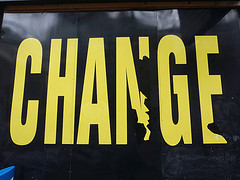
Photo credit: busy.pochi on Flick
You could try it at your workplace – no matter what industry you are in.
Looking at systems – as well as actions – is an important part of incident investigation after an injury or “near miss” in the workplace. This article in the May/June issue of WorkSafe Magazine looks at an innovative program for investigating incidents, done at a ski hill.
“It focuses less on what happened and more on how and why it happened,” said Miriam Bougie, Whistler-Blackcomb’s COR program supervisor, quoted in the article. “Before we focused on what caused the injury, be it contact with the ground, or a worker twisting a knee by losing his or her balance skiing in low light conditions.”
Similar accidents continued. They realized they needed to look deeper to find and remedy causes, so they adapted this Incident Investigation Tool created by go2, the human resources association for hospitality, and human factors specialists.
This approach avoids a focus on blame – which I wrote about recently in my post Change not blame about a similar approach in a health care setting.
“When an incident occurs in the workplace, a common reaction is to look for somewhere to place blame,” reads the bulletin Incident investigations in health care: Focusing on change instead of blame.
“It’s more important and productive to look for reasons why the incident happened and what can be done to prevent it from recurring…focus on changes that will make the workplace safer, rather than blaming those involved in the incident.”
That’s exactly what the new investigation template aims to do – and it can be adapted for any industry, so give it a try. The basic question behind it all is: “Do we have the safe processes in place that allow the worker to do the job safely?” as Bruce Jackson put it in the WorkSafe Magazine article. He’s WorkSafeBC’s senior manager of Prevention Quality, who said “blaming the worker is the easy route” and “there are so many other things at play that influence the outcome.”
Of course workers have a role to play – but they are just one piece of the puzzle. Please let me know if you have any investigation tips to share.


